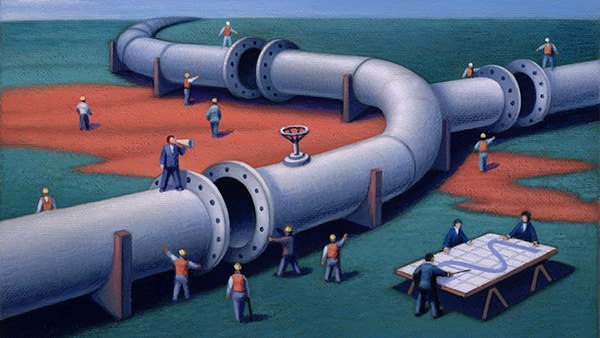 The other day I was talking to an executive director of a regional, well-established non-profit. She was lamenting that her organization was steeped in very strict silos, and the situation made it difficult for development to be effective.
The other day I was talking to an executive director of a regional, well-established non-profit. She was lamenting that her organization was steeped in very strict silos, and the situation made it difficult for development to be effective.
I was confused by this because here I was, talking to the head of the non-profit, and even she can’t bring these departments together? “No,” she said, “I’ve been at it for almost five years. This is a 60-year-old non-profit, and these people are really stuck in their ways.”
Usually, when I have this conversation (and Richard and I have had numerous ones) it’s with a development director or major gift officer who is complaining about leadership for not doing something about “the silo problem” at their non-profit.
But here I was, having the same conversation with the ED! So I said to her, “have you ever considered using your major gift program to bring your organization together?” There was a long pause on the phone. “How do you do that?” she said.
This is where I went into a long explanation of how Veritus works with major gift teams to help them come up with dynamic offers with real numbers, effective donor presentations, and taking donors to the scene of the need.
In order for major gifts to be effective and for major gift officers to do their work effectively, everyone in the organization has to be involved. This is not a job JUST for an MGO or the development team. Finance, HR, Program and leadership have to be engaged.
So this is how I told the ED she could bring down her silos and allow her departments to come together:
- Set up an organization-wide meeting – Make it mandatory for everyone to attend. The purpose is to talk about the central importance of the donor to the organization. Be prepared to give results over the last several years on donor revenue. Break it out by direct-response, mid-level, and major gifts – and whatever other categories you have.
- Tell donor stories — Have MGOs and other development team members tell stories of donors and what an impact your mission has had on their lives. Talk about why they give to your organization. Use emotion.
- Tell your mission stories — Have leadership, board members and program people tell everyone stories about what you are doing as an organization to change the world. It’s amazing to me how many folks who work at a non-profit have their heads down in the work, “forgetting” what their mission is. This brings everyone back to what you do everyday to make the world a better place.
- Have the major gift team talk about why everyone in the room is needed for success — Take the staff through how you cultivate a donor. Why you need finance to help you with the cost of a program, why you need program to help you tell the donor what it is you do in emotional terms. Why you need the board and the CEO to relate to a major donor and help them feel they can trust the organization.
- Create a smaller meeting with finance, leadership, development and program — In that meeting, discuss why they are important in making major gifts work successful. Give an example of how you come up with an offer for a donor to fund. Show folks why you need finance to come up with the real costs that include overhead. Help the head of program to understand that donors want to hear from those that are actually doing the work, and how you can help prepare them. What you are doing is creating empathy for each other’s work.
- Encourage the heads of each department to meet together informally on a regular basis — This is IMPORTANT. What Richard and I have found over the years is that the REAL work gets done outside the normal office environment. So as a leader, encourage your team to get together to talk about their work and how they can help each other.
- Start a mid-level gift program — If you have a number of donors who are NOT major donors yet, but they are making sizable gifts, creating a mid-level program helps bring together the development team in a way they’ve never worked together before. Mid-level brings together the direct-response team and major and planned gifts. There are two competing objectives with mid-level donors, and it takes the full development team to buy into the program to make it successful.
- Keep bringing the organization together — You can’t have just one meeting with your organization and expect that everything will be great. You have to do this every month, or at least on a regular basis. The reason: to remind people what you do and why you do it. As a leader, it is your job to break down the silos. Those silos are full of dysfunction. If you create a space for your major gift team to report back on the beautiful things donors are doing to carry out your mission, you reinforce the importance of everyone on your team.
- Don’t expect that it will happen overnight, or that there will never be problems — It will take time to bring people together. And you are That means you will fail a lot. But stay with it! Keep plugging away at it.
If you are a leader, development director or a major gift officer, you can use your major gift program as a catalyst for change… one that can bring together every department in a way no other department can. The reason for this is that the major gift team is the closest to the donor. You have real relationships with them.
After my conversation with the executive director, she was pumped! She’s implementing this exact plan for her organization. In a few months, I’ll let you know how it’s going.
Jeff







This is a nice piece. And a great methodology. The problem often is the subtle resistance of many should be at those meetings to attend and participate. You can get non-development staff to a meeting, it’s ENGAGING them that’s the tough part. There are subtle dynamics at play , age, gender, culture and if top leadership (Board Chair and ED) are strongly supporting this initiative. Nice piece.